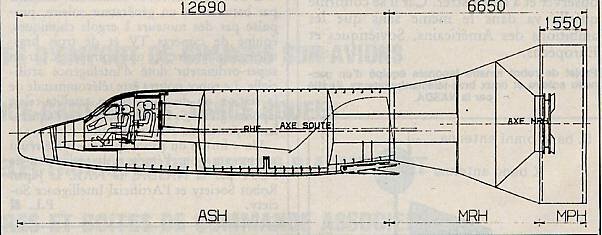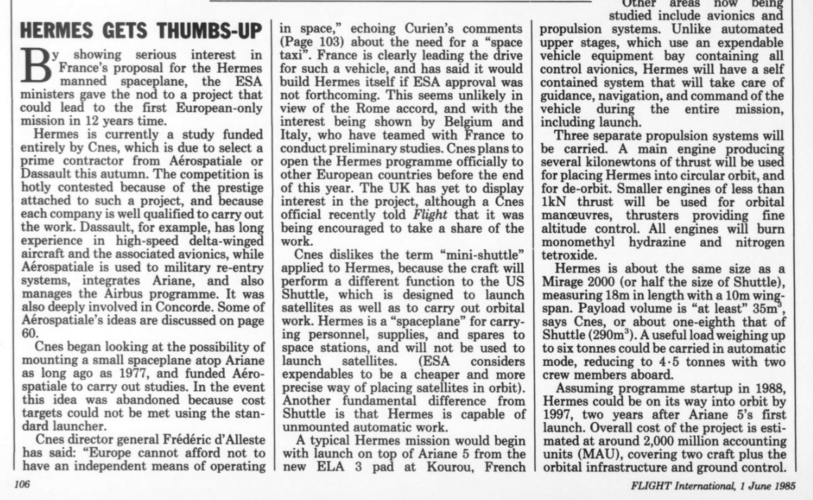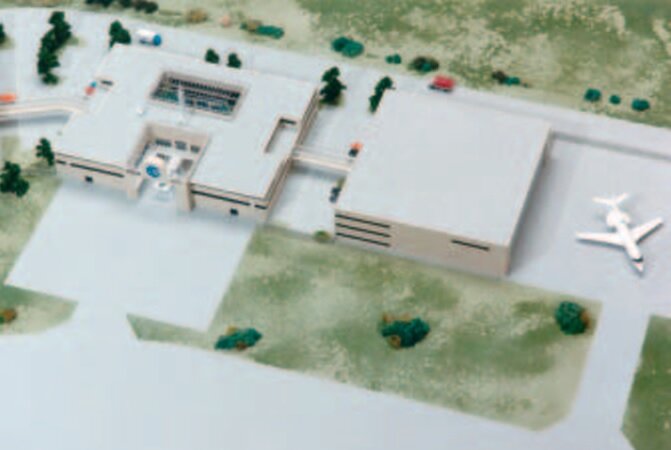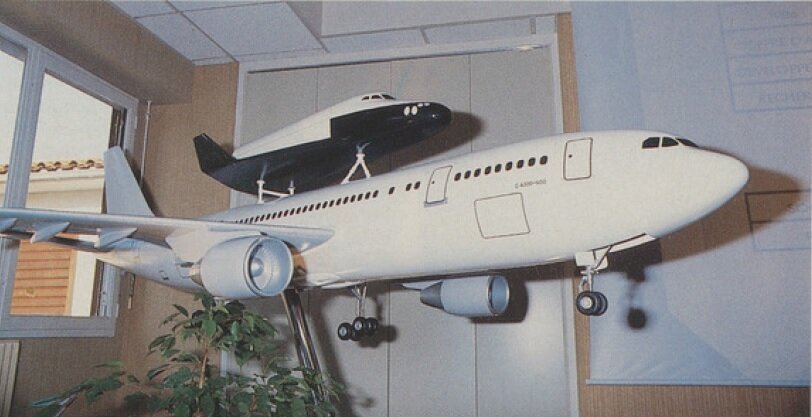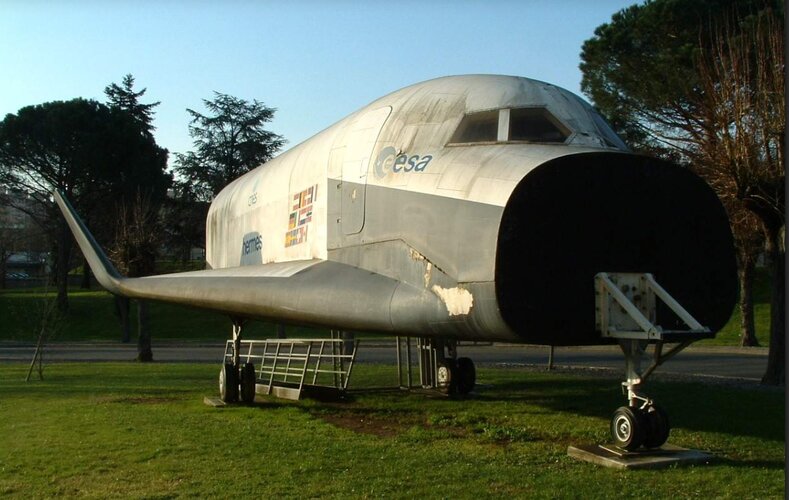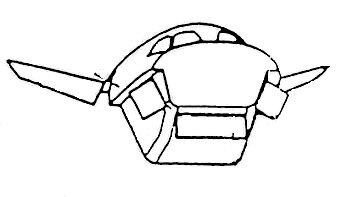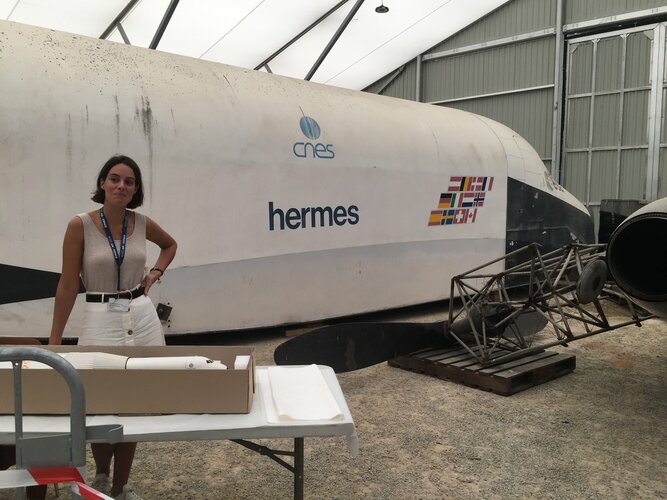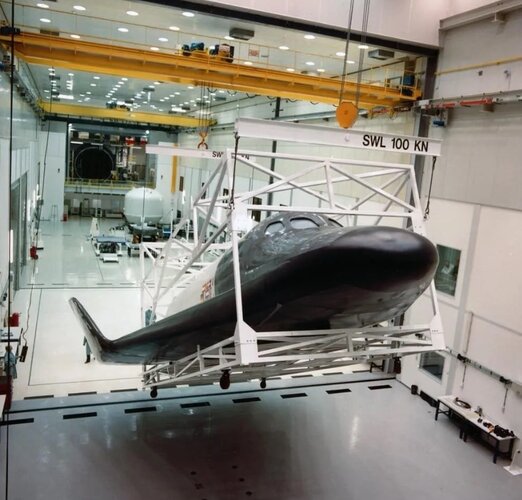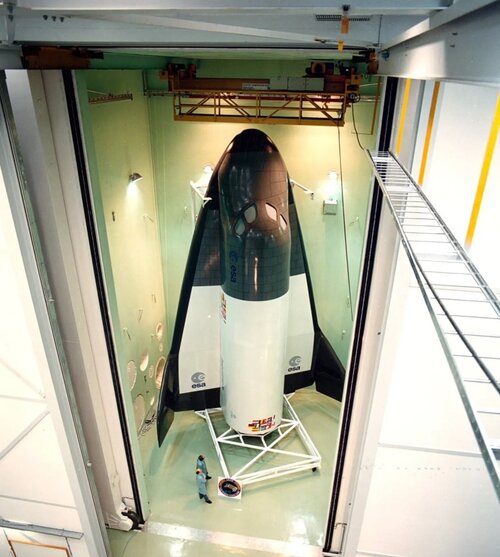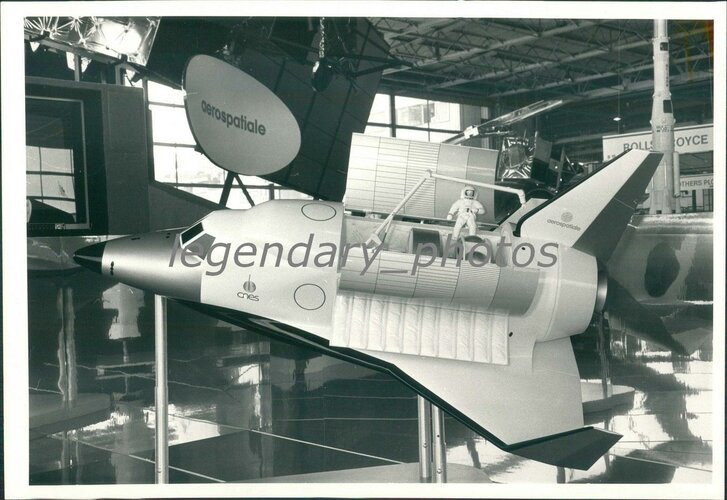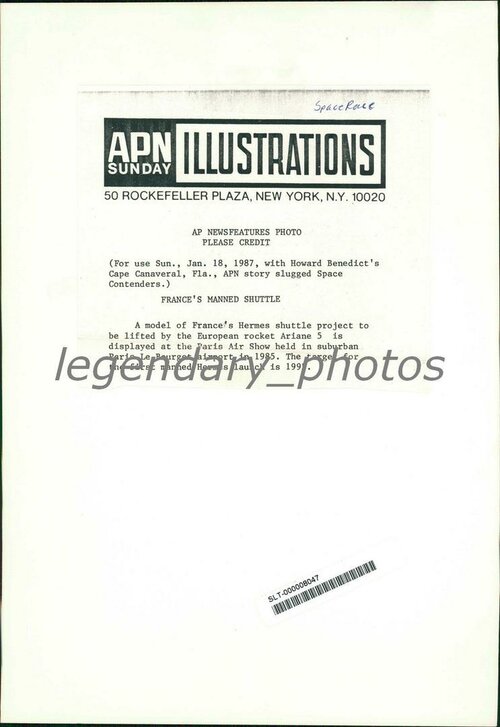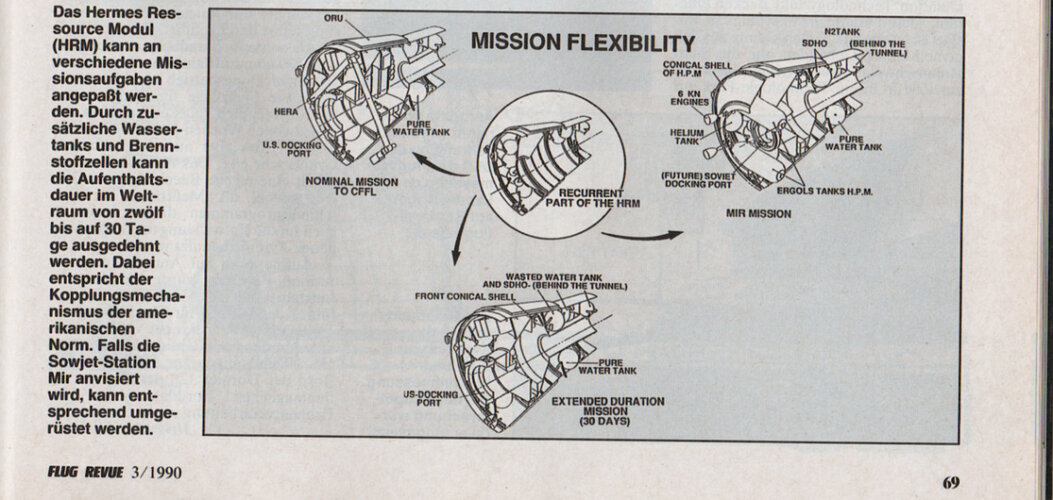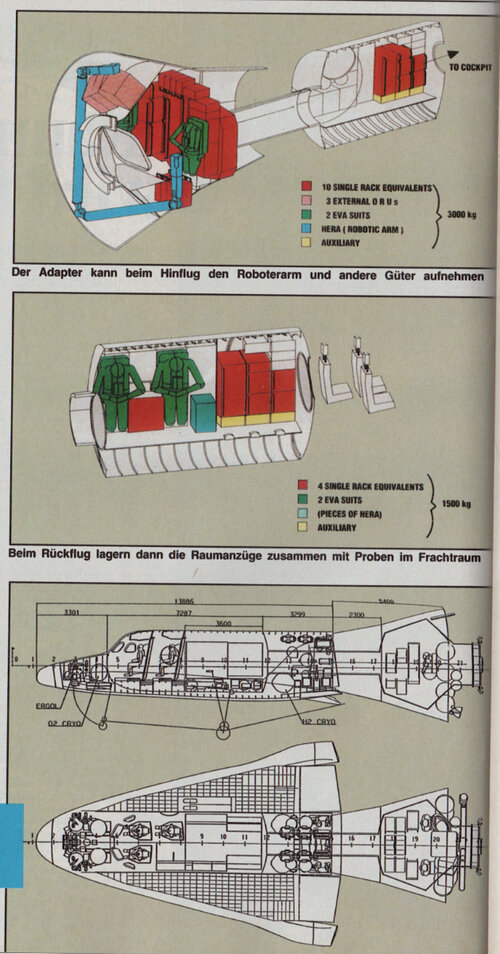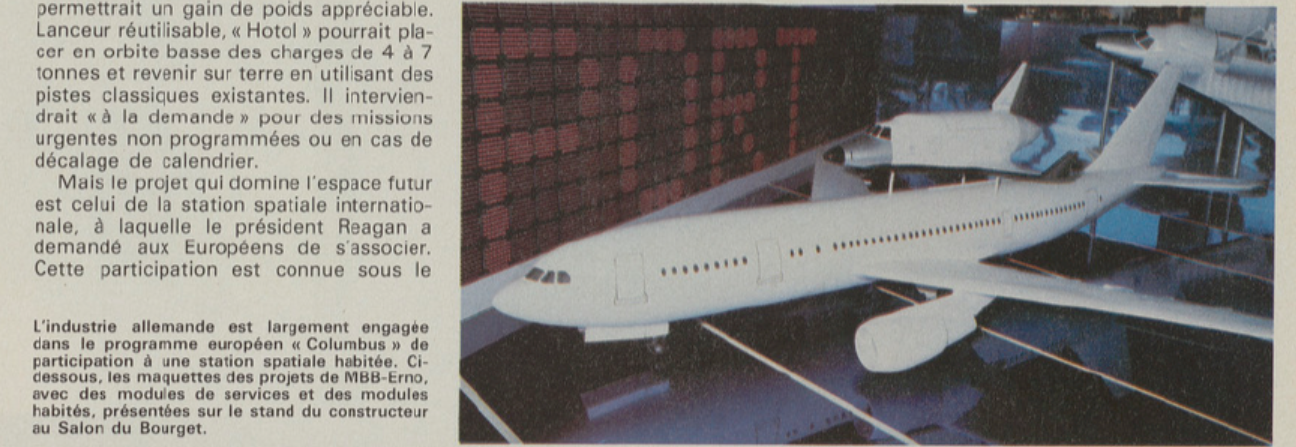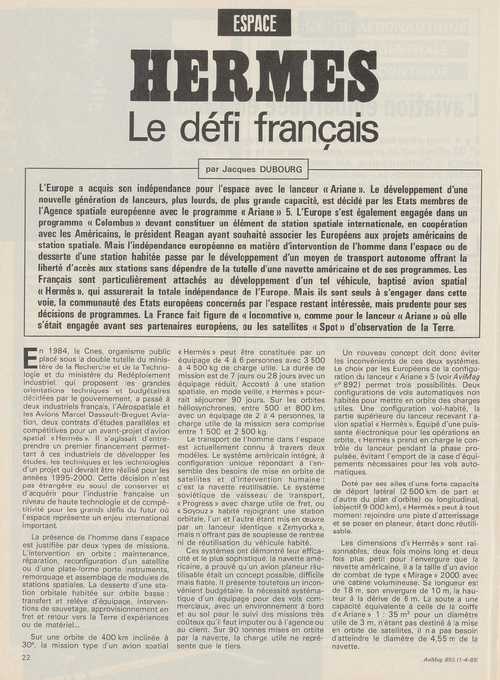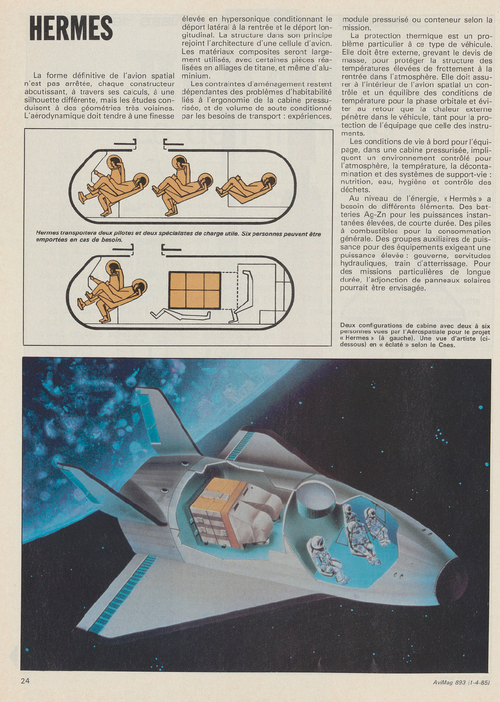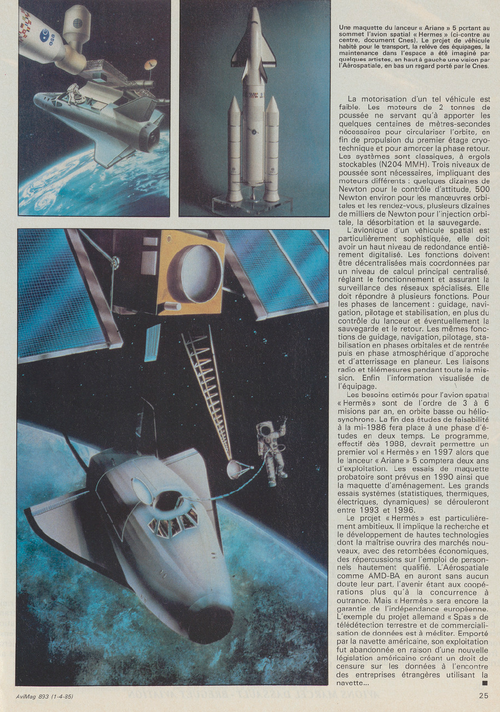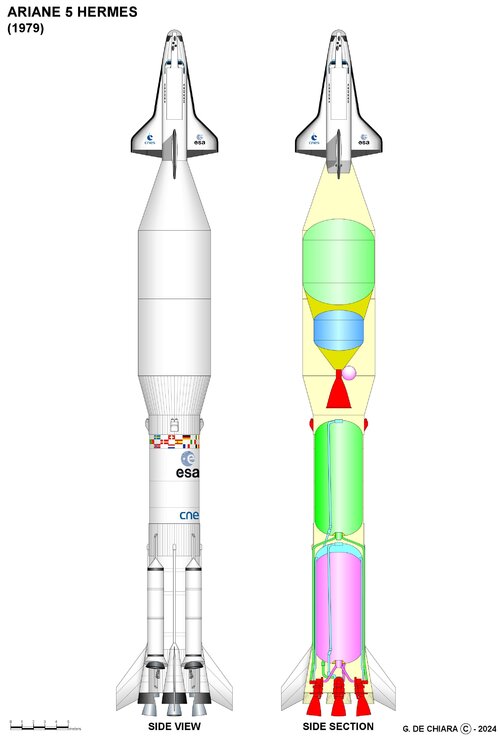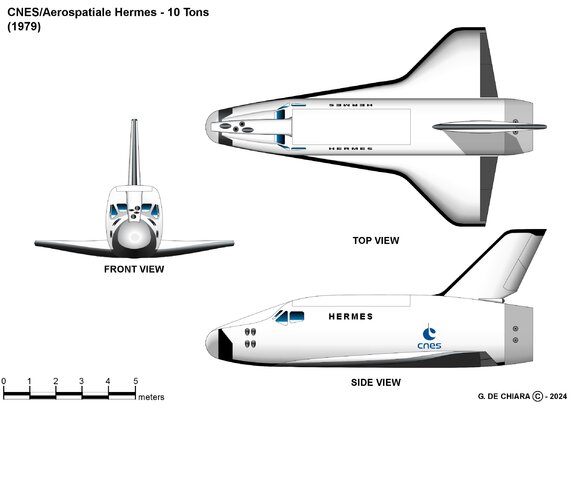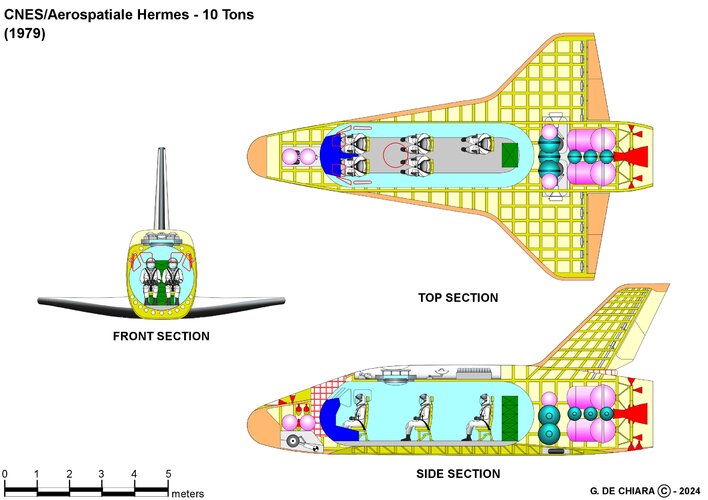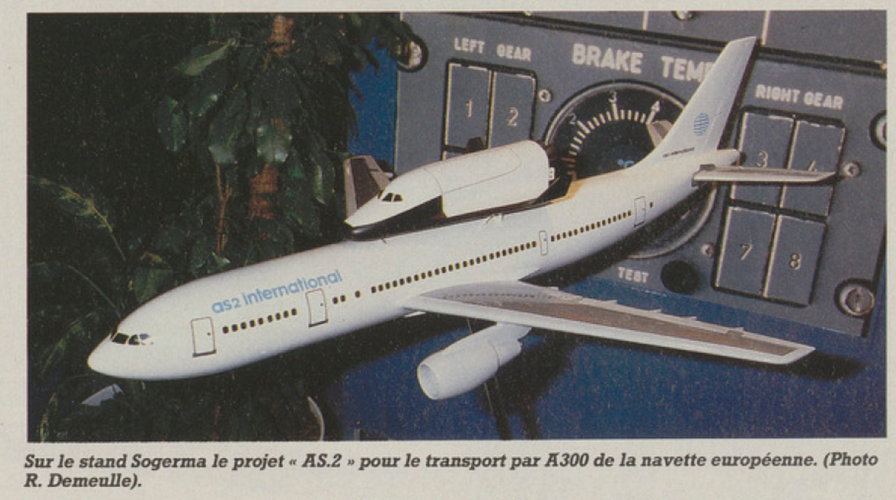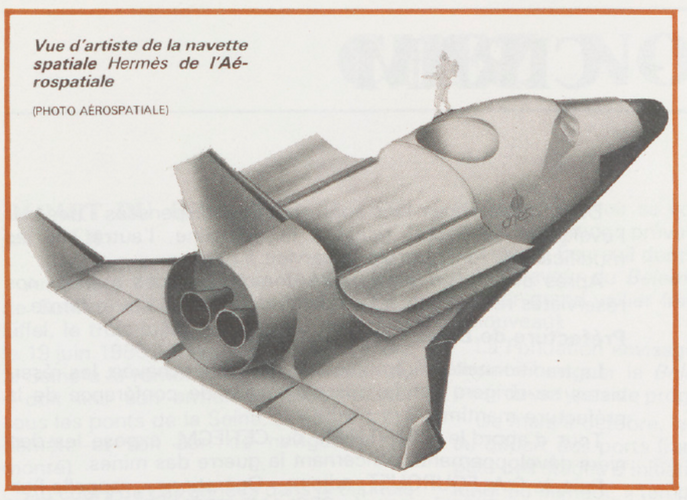southwestforests
ACCESS: Top Secret
- Joined
- 28 June 2012
- Messages
- 754
- Reaction score
- 1,209
FYI. Hermes is not a "Space Shuttle". It is a winged spacecraft or spaceplane.
The way ESA itself talks about Hermes can lead a person to find both terms acceptable,
In the early 1980s, the French space agency CNES started investigating a small spaceplane design to be launched on an Ariane rocket. It was envisioned that Hermes would service a small space station, the Man-Tended Free Flyer (MTFF), built primarily by German and Italian industry under ESA's Columbus programme.
By 1984, Hermes had evolved into a 'mini' space shuttle capable of carrying a crew of 4-6 plus a 4500 kg payload in its cargo bay. This was too heavy for the existing Ariane 4 launch vehicle, so CNES began looking at uprated Ariane versions for the 1990s. Hermes development was a major driver in the specification for ESA's new Ariane 5 launcher.

History: Hermes spaceplane, 1987
Hermes, 1987: Hermes was to have been part of a manned spaceflight programme providing independent European manned access to space. Designed to take three astronauts to orbits of up to 800 km altitude on missions of 30 to 90 days, the Hermes spaceplane would have been launched using the Ariane 5...
www.esa.int
Spaceplane does fit as the proper term for the thing and is the term most seen,
for instance,
ESA's Hermes manned spaceplane was planned to service the Columbus Man-Tended Free-Flyer and the International Space Station Columbus Attached Laboratory. The project was approved at the Ministerial Meeting in November 1987; the meeting of November 1992 reoriented Hermes into a technology programme. [Image Date: 1990-00-00] [91.03.017-001]

Hermes was intended to provide independent European manned access to space. Designed to take three astronauts to orbits of up to 800 km altitude on missions of 30–90 days, the spaceplane would have been launched using the Ariane 5 rocket.


